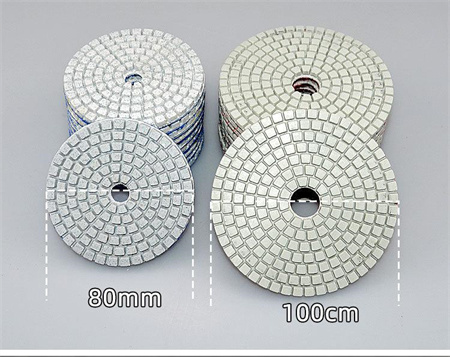How to Negotiate Prices for Large Diamond Pad Shipments

First and foremost, it’s crucial to recognize the significant investment you’re making in diamond pads. Large shipments typically mean large quantities, which often come with substantial costs. This makes the stakes high for both the buyer and the seller. The price you pay will not only depend on the cost of production but also on various other factors such as market demand, shipping logistics, and even the reputation of the supplier. Before jumping into negotiations, it’s important to have a solid understanding of these dynamics.

Building strong relationships with suppliers is another essential aspect of negotiation. Trust and rapport can sometimes outweigh the hardline tactics of price bargaining. Suppliers are more likely to offer discounts, more favorable terms, or flexible payment options to buyers they consider reliable and loyal. Establishing a long-term relationship by placing smaller orders before negotiating for larger shipments can pave the way for better pricing in the future. It’s not always about getting the best deal on a single order but ensuring that both parties are mutually invested in the partnership. Over time, this approach can lead to substantial savings.
Flexibility is another important consideration. While you may have a target price in mind, being too rigid can hinder negotiations. Consider offering alternatives, such as longer-term contracts or larger order commitments. Sometimes suppliers are more willing to reduce prices when they see a promise of consistent business in the future. Be open to discussing various aspects of the deal, from delivery timelines to payment terms. It’s important to be willing to adjust your expectations in exchange for better pricing. If a supplier is offering a higher price than anticipated, explore the possibility of scaling the shipment or adjusting the delivery schedule to see if there’s room for a discount.
When negotiating for larger diamond pad shipments, don’t overlook the importance of logistics. Shipping costs can add a significant amount to the overall price of a shipment, so it’s important to factor these into your negotiations. Sometimes, a supplier may be willing to reduce the base cost of the shipment if they can pass on the responsibility of shipping to you or work with a specific logistics provider that offers a discount. Shipping timeframes can also be an important negotiating point. If you don’t need immediate delivery, consider negotiating for a longer lead time in exchange for a lower price. These seemingly small adjustments can have a big impact on your overall costs.
One of the more subtle but effective tactics is to present multiple options to the supplier. For example, instead of asking for a price reduction on a single large shipment, you might consider negotiating for a series of smaller, staggered shipments over time. This tactic allows the supplier to plan their production and shipping more effectively, and they might be willing to offer a better rate because they have a clear order pipeline. Additionally, diversifying your requests can increase your bargaining power. You can ask for pricing on different diamond pad grades, packaging options, or bulk purchase discounts. The more you ask, the more opportunities you create for suppliers to offer a deal that works for both parties.
Throughout the negotiation process, always be prepared to walk away. This may seem counterintuitive, but in reality, it is a powerful negotiation tactic. If the terms aren’t right, or if the supplier is unwilling to meet your needs, it’s better to explore other options than to agree to an unfavorable deal. Having alternative suppliers in mind also strengthens your bargaining position. Walking away doesn’t necessarily mean the end of the negotiation; sometimes, it serves as a prompt for suppliers to reassess their offer and return with better terms.
In summary, negotiating prices for large diamond pad shipments involves much more than simply haggling over numbers. It’s about understanding the market, developing strong relationships, and being open to flexible terms. With careful preparation, a strategic approach, and a willingness to collaborate with your suppliers, you can achieve the best possible deal. The key to success in negotiations lies in creating a partnership where both you and your supplier benefit in the long run.

